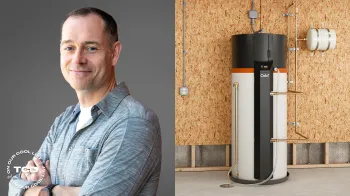Thanks to a simple, water-repelling substance, scientists may have just solved a major problem hindering the development of carbon capture technology.
According to their study published in the journal Nature Energy, researchers from Rice University and the University of Houston have found a new method to tackle salt buildup — a significant issue in systems that convert carbon dioxide pulled out of the air into useful products such as chemicals and fuels.
Though large-scale carbon capture systems are still only experimental, this approach could one day play a significant role in helping to mitigate changes to the climate by reducing pollution.
At the moment, many of these systems use a machine called an electrolyzer, a specialized device that uses electricity to drive chemical reactions. In this case, that involves breaking down carbon dioxide and converting it into substances more useful for industrial processes, such as ethylene or carbon monoxide.
This process has tantalized scientists for years with its promise of a circular economy for carbon dioxide, but it's not without its snags.
The Texas researchers studied a big one — the electrochemical process that converts carbon dioxide also seems to form salt crystals as a byproduct. Though researchers don't fully understand why that happens, the negative impact of these salts is already clear.
Watch now: Giant snails invading New York City?
"A key achievement is that a hydrophobic surface coating was used to remove droplets from the flow channels before they could dry, increasing the operational stability of the electrolyzer," said Haotian Wang, an associate professor at Rice and a corresponding author of the paper, per Tech Xplore.
In other words, Wang and the other researchers found that using a water-repellent substance prevented the build-up of salt crystals that can otherwise block the flow of carbon dioxide through the machine. That kind of blockage limits the stability of the process that converts carbon dioxide, hurting our ability to do it on a large scale efficiently.
The work of Wang and his colleagues could be a real step toward fixing that. Though carbon capture is not likely to be a fix-all for the changing climate, studies suggest the technology could reduce global planet-warming gas pollution by approximately 14% by 2050. Groups such as the Intergovernmental Panel on Climate Change have said embracing this approach may be "unavoidable" in the quest for a net-zero world, especially when used on-site in highly polluting industries such as power generation.
If we are to succeed, building a greener future will ultimately require a mix of practices, technologies, and mindset shifts. Innovative approaches such as that of the Texas researchers will undoubtedly play a vital role.
|
Do you think America could ever go zero-waste? Click your choice to see results and speak your mind. |
Join our free newsletter for weekly updates on the latest innovations improving our lives and shaping our future, and don't miss this cool list of easy ways to help yourself while helping the planet.













